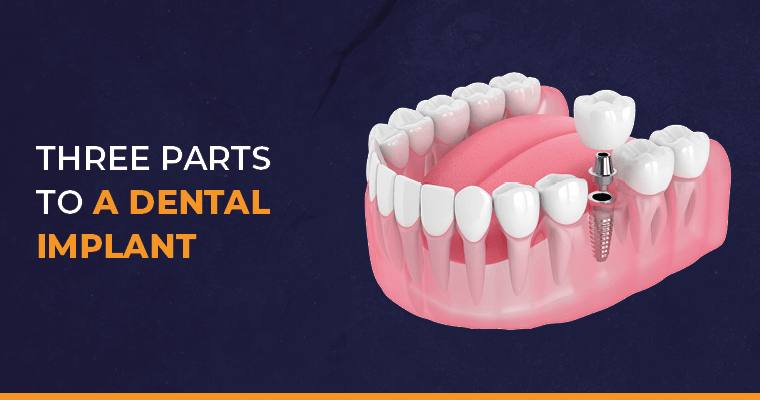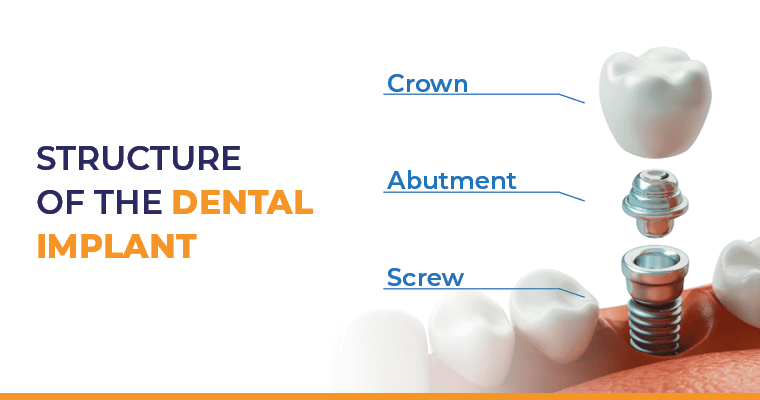What Is a Dental Implant?

A dental implant is a structure that replaces a missing tooth. We insert an implant directly into the jawbone, which then acts as an anchor for a connecting piece known as an “abutment.”
That abutment then connects to the visible part of a dental implant: an artificial tooth known as a crown.
That crown is custom-made to fit your mouth and match the color of your teeth – and better yet, crowns look, feel, and function just like your natural teeth.
What Is the Structure of a Dental Implant?

As mentioned earlier, there are three parts to any dental implant:
- Screw (Post)
- Abutment
- Crown
We sometimes refer to the screw part of the implant as the post. That post screws into the jawbone to act as an anchor, followed by an abutment that holds your dental crown (replacement tooth) in place.
What’s the Difference between a Dental Implant and a Traditional Crown?
A traditional crown is just a cap that covers your original tooth. It’s similar to the crowns used in a dental implant, but the difference lies in how it’s held in place.
Dental implants, conversely, include more than just the crown you see on top. They connect directly to your jaw, and as such, don’t require a pre-existing tooth to bond to.
What Are the Advantages of Dental Implants?
Implants have several advantages over other tooth replacements such as dentures, which are removable artificial teeth.
Implants:
- are more natural and comfortable,
- have a higher success rate,
- improve your chewing function,
- lead to a lower risk of cavities developing in nearby teeth, and
- lead to better maintenance of bone at the site of the lost tooth.
Another of the major benefits of dental implants, when compared to dentures, is that they don’t need to be taken out and cleaned every night!
How Does Getting a Dental Implant Work?
1: Evaluation
Dr. Isaacson will evaluate your needs with a comprehensive examination. Based on that, you’ll then have a discussion about possible treatments, where he’ll recommend the best course of action for you. Depending on your situation, there may be better ways to restore your smile than a dental implant. However, if you do decide to go ahead with an implant, then you can expect the following basic steps for your procedure.
2: Extraction
If you still have a remaining tooth, Dr. Isaacson will remove it before inserting the screw. This can be done at the same time as the rest of your procedure.
3: Fitting
We’ll start by drilling and screwing the post in place. Suitable bone structure is necessary for your post to stay securely in place, which is why your initial examination with Dr. Isaacson is so important.
4: Connecting
Once your implant is stably secured, Dr. Isaacson will connect an abutment to the implant. He’ll then tighten the abutment so it stays securely in place when you eat, without shifting or wiggling.
5: Placing the Crown
After your gums have healed, Dr. Isaacson will fit your permanent crown, which will have been created and color-matched well ahead of time.
Now that you understand how getting a dental implant works, you’ll hopefully see why they’re typically the preferred treatment for missing or critically damaged teeth. If you might need a dental implant, look no further than Dr. Tim Isaacson in Bloomington, MN.
Dr. Tim Isaacson provides professional and caring dental treatment for the Bloomington, MN area.